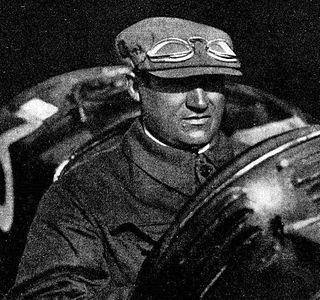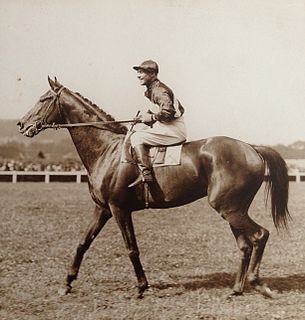The European Grand Prix was a Formula One event that was introduced during the mid-1980s and was held every year from 1993 to 2012, except in 1998. During these years, the European Grand Prix was held in a country that hosted its own national Grand Prix at a different point in the same season, at a different circuit. The race returned as a one-off in 2016, being held on a street circuit in Baku, Azerbaijan; this event was renamed to the Azerbaijan Grand Prix in 2017.

The British Grand Prix is a Grand Prix motor race organised in the United Kingdom by the Royal Automobile Club. First held in 1926, the British Grand Prix has been held annually since 1948 and has been a round of the FIA Formula One World Championship every year since 1950. In 1952, following the transfer of the lease of the Silverstone Circuit to the British Racing Drivers' Club, the RAC delegated the organisation of the race to the BRDC for the first time, and this arrangement has continued for all British Grands Prix held at Silverstone since then.

The French Grand Prix, formerly known as the Grand Prix de l'ACF, is an auto race held as part of the Fédération Internationale de l'Automobile's annual Formula One World Championship. It is one of the oldest motor races in the world as well as the first "Grand Prix". It ceased shortly after its centenary in 2008 with 86 races having been held, due to unfavourable financial circumstances and venues. The race returned to the Formula One calendar in 2018 with Circuit Paul Ricard hosting the race.
Grand Prix motor racing, a form of motorsport competition, has its roots in organised automobile racing that began in France as early as 1894. It quickly evolved from simple road races from one town to the next, to endurance tests for car and driver. Innovation and the drive of competition soon saw speeds exceeding 100 miles per hour (160 km/h), but because early races took place on open roads, accidents occurred frequently, resulting in deaths both of drivers and of spectators. A common abbreviation used for Grand Prix racing is "GP" or "GP racing".

The Italian Grand Prix is the fifth oldest national Grand Prix, having been held since 1921. In 2013 it became the most held Grand Prix. It is one of the two Grands Prix which has run as an event of the Formula One World Championship Grands Prix every season, continuously since the championship was introduced in 1950. Every Formula One Italian Grand Prix in the World Championship era has been held at Monza except in 1980, when it was held at Imola.

The Spanish Grand Prix is a Formula One motor racing event currently held at the Circuit de Barcelona-Catalunya. The race is one of the oldest in the world still contested, celebrating its centenary in 2013. The race had modest beginnings as a production car race. Interrupted by the First World War, the race waited a decade for its second running before becoming a staple of the European calendar. In 1927 it was part of the World Manufacturers' Championship; it was promoted to the European Championship in 1935 before the Spanish Civil War brought an end to racing. The race was successfully revived in 1967 and has been a regular part of the Formula One World Championship since 1968 at a variety of venues.

Otto Wilhelm Rudolf Caracciola was a racing driver from Remagen, Germany. He won the European Drivers' Championship, the pre-1950 equivalent of the modern Formula One World Championship, an unsurpassed three times. He also won the European Hillclimbing Championship three times – twice in sports cars, and once in Grand Prix cars. Caracciola raced for Mercedes-Benz during their original dominating Silver Arrows period, named after the silver colour of the cars, and set speed records for the firm. He was affectionately dubbed Caratsch by the German public, and was known by the title of Regenmeister, or "Rainmaster", for his prowess in wet conditions.

The Monza Circuit is a historic 5.793 km (3.600 mi) race track near the city of Monza, north of Milan, in Italy. Built in 1922, it was the world's third purpose-built motor racing circuit after Brooklands and Indianapolis and the oldest in mainland Europe. The circuit's biggest event is the Italian Grand Prix. With the exception of the 1980 running, the race has been hosted there since 1949.

The 1950 British Grand Prix, formally known as The Royal Automobile Club Grand Prix d'Europe Incorporating The British Grand Prix, was a Formula One motor race held on 13 May 1950 at the Silverstone Circuit in Silverstone, England. It was the first World Championship Formula One race, as well as the fifth British Grand Prix, and the third to be held at Silverstone after motor racing resumed after World War II. It was the first race of seven in the 1950 World Championship of Drivers.

Antonio Ascari was an Italian Grand Prix motor racing champion. He won four Grands Prix before his premature death at the 1925 French Grand Prix. He was the father of two-time World Champion Alberto Ascari.
Charles Anthony Standish Brooks was a British racing driver also known as the "Racing Dentist". He participated in 39 Formula One World Championship Grands Prix, competing for the first time on 14 July 1956, and achieved six wins, 10 podium finishes and 75 career points. He was third in the World Drivers' Championship in 1958 with Vanwall and second in 1959 with Ferrari. He also scored the first win by a British driver in a British car in a Grand Prix since 1923, driving a Connaught at Syracuse in 1955 in a non-championship race.

The Montjuïc circuit is a former street circuit located on the Montjuïc mountain in Barcelona, Catalonia, Spain. The circuit was also the venue for the Spanish motorcycle Grand Prix from 1950 to 1968, and then hosted the event on even-numbered years until 1976. The last Formula One Grand Prix held there in 1975, is notable for both a fatal crash that led to Formula One abandoning the venue and the only occasion to date that a female driver has scored World Championship points.
The Grand Prix de Paris is a Group 1 flat horse race in France open to three-year-old thoroughbred colts and fillies. It is run at Longchamp over a distance of 2,400 metres, and it is scheduled to take place each year in July.

The Grand Prix de Saint-Cloud is a Group 1 flat horse race in France open to thoroughbreds aged four years or older. It is run at Saint-Cloud over a distance of 2,400 metres, and it is scheduled to take place each year in late June or early July.
The Prix Jean-Luc Lagardère, formerly the Grand Critérium, is a Group 1 flat horse race in France open to two-year-old thoroughbred colts and fillies. It is run at Longchamp over a distance of 1,400 metres, and it is scheduled to take place each year in early October.

Heinrich 'Heiri' Suter was a Swiss road racing cyclist. Excelling mainly in the classics, Suter was the first non-Belgian winner of the Tour of Flanders in 1923. Two weeks after his win in the Tour of Flanders, he won Paris–Roubaix, becoming the first cyclist to win both classics in the same year. He also holds a record six victories in Züri-Metzgete, Switerland's most important one-day race.

Albert Divo was a Grand Prix motor racing driver. He was born in Paris, France. In 1922, Divo competed in the International Tourist Trophy endurance race on the Isle of Man. He scored his first major victory driving for Sunbeam at the 1923 Spanish Grand Prix at the Sitges Terramar circuit about 40 km outside Barcelona.

James Guthrie was a Scottish motorcycle racer.

Max Emilian Verstappen is a Belgian-Dutch racing driver and the 2021 Formula One World Champion. He competes under the Dutch flag in Formula One with Red Bull Racing. He is the son of former Formula One driver Jos Verstappen.

Charles Pierre Elie Montier was a French racing driver and automotive engineer whose race entries included the inaugural 24 Hours of Le Mans.
















